The Founder
The Marston Green Model Engineering Club was founded by the late Frank Allcott, with the first meeting being held on 29th June 1945 and was reported on in the Model Engineer Magazine in November 1945. The club was originally called The Marston Green Model Arts & Crafts Club. Mr Allcott, born in 1896, died on 27th December 1971 aged 75 and shortly after his death it was decided to change the club name to The Frank Allcott Model Arts & Crafts Club.
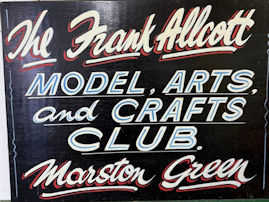
However, a number of people in and outside the club felt the name failed to identify the location of the club, also, most of the members were new and did not know Mr Allcott and so it was decided to change the name once again, and at the AGM on 21st October 1980 the name was altered to the name by which it was known for many years as The Marston Green Model Engineering Club.

Frank Allcott, who in addition to being the club Chairman, was Chairman of Bickenhill Parish Council and served for 21 years. He was head of civil defence, an air raid warden, head of the wartime poultry and rabbit club, assisted with planning the layout of the Marston Green memorial garden, assisted with the church youth club, and in fact took an active part in many village activities and projects. He had a seed merchants shop between 1930 and 1950 which was opposite the new school in Station Road where he sold just about everything connected with ironmongery and hardware, in 1950 he moved to a newly built shop opposite the memorial garden in Elmdon Road where he carried on selling the same type of merchandise.
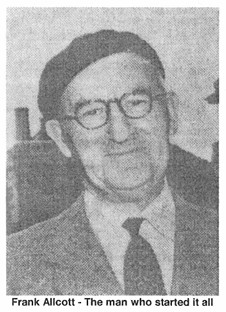 |
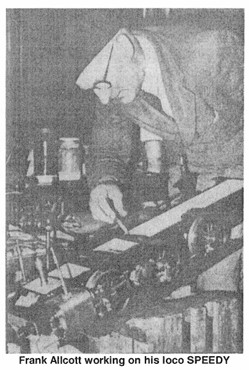 |
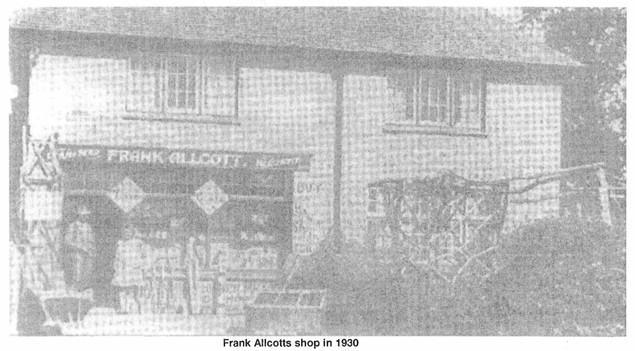 |
Frank was a pattern maker by trade and highly skilled with wood. He was at the forefront of many things we have all taken for granted for many years, one of his projects was making patterns for the first ever overhead valve engine whilst at the Wolsley Car Company. He also made many small single cylinder petrol engines for model aircraft.
He was a very skilled engineer, who had a compact well equipped workshop at the bottom of his garden at 83 Station Road, Marston Green. During the war he produced turned parts for army tanks and after the war made precision components for the railway companies, including some for the Royal train.
In the evenings Frank instructed some of the local lads in his workshop the basic skills of metalwork. These lads usually made a small oscillating steam engine which involved very many aspects of engineering and these lads have had lasting benefits of the good procedures they were taught. His workshop was a Mecca for those fortunate youths who could not afford the expensive equipment required for model engineering. With his and the lads’ enthusiasm, together with five older founder members: Fred Priestly, Eric Withington, Charlie Belcher, Fred Teague and Charlie Cokayne, it was decided to form the club. A committee was formed and rules introduced. Meetings were held at Marston Green school on the last Wednesday of every month.
Club Headquarters
In April 1950 Mr Allcott knew of some land with possibilities for a future headquarters. The committee went to view this land which was on the corner of Coleshill Road and Bickenhill Road but, although Mr Allcott was on the Parish Council the owners of the land could not be traced so this ambition fell through. Despite this, it was still agreed that preference should be given to finding their own headquarters / workshop rather than building a portable railway track which had been suggested in January 1949.
In the meantime, meetings continued to be held in the school hall. In June 1952 a letter was received from Marston Green Parochial Church Council (PCC) re: letting of a piece of land suitable for club headquarters. This land, being at the bottom right hand corner of where St Leonard’s Close is now. Discussions took place regarding the suitability, type of building and plans, and in October the following year information was received from Batley Garages regarding a prefabricated type of building. The church council’s approval was obtained and after lengthy discussions with Warwickshire County Council and the approval of the plans the prefabricated building measuring 25ft by 12ft was purchased for £147-13-0. Five and a half cubic yards of ready mixed concrete was ordered for the base at a cost of £3-9-0 per cu yd and this was delivered on Saturday 30th October 1954. The electrics were installed and the lathe moved from Mr Allcott’s workshop to the headquarters, and on 25th May 1955 the first meeting was held in the new club room. Letters were sent to engineering companies in the Birmingham area asking for donations of redundant machinery and tools etc to help equip the workshop. Shortly afterwards the workshop was reasonably well equipped to give a good start. Electric motors were purchased and a milling machine was motorised and a welding kit purchased. Also a new lathe and tools were purchased from a Mr Webb of Harborne and an old Myford lathe which the club had was sold. The new lathe was installed together with the necessary shafting and belting, and was working by October 1965. About this time a bandsaw was also purchased.
In November 1966 it came to our notice that the church would shortly be selling the land we were on plus the surrounding area for the building of St Leonard’s close and we should therefore start looking for a new site.
5th July 1968 a letter was received from the Vicar, re the sale of land for building what is today St Leonard’s Close. He suggested a new site for us together with some financial help, if we were to move our workshop. This new site would be adjacent to the church hall. Planning forms were filled in and plans drawn up for submission to the Council before the 12th August deadline. A committee meeting was held to decide whether to accept this offer or fold up the club. It was decided to keep going and accepted £150 from the PCC to help finance the move. A new concrete base was laid on 3rd May 1969 and on wet August Bank Holiday weekend the old building was dismantled and re-erected by the members on the new site, at the same time adding more sections manufactured by John Harbidge to make the workshop a full 13ft longer. By November 1969 the inside and outside was tidied up and looking respectable. A letter from the Vicar was received in June 1973 re annual tenancy which would be payable on 30th June each year. In July 1986 the old roof was replaced by outside contractors at a cost of £520, and over the years wall boards added, suspended ceiling and fluorescent lighting installed. Various tools and machinery have been acquired and exchanged to upgrade the facilities within the club. The roof has been replaced again by outside contractors and on the 2nd / 3rd June 2001 at a cost of
£1600, a higher standard of workmanship and materials has resulted in a first class job being done.
Track & Locomotives
January 1949 – under construction at this time in Mr Allcott’s workshop was a 5″ gauge GWR 0-6-0 panier tank locomotive called Speedy which would be driven by steam.
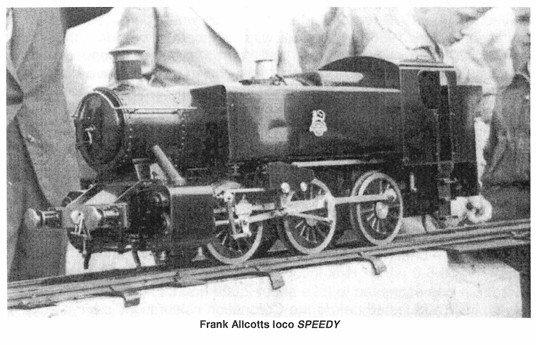
It was estimated to take about 2,000 hours to complete and should be finished, tried and tested before the Coronation celebrations start in June 1953. It was suggested to build a portable 2 1/4″ and 3 1/2″ gauge track and this should be ready for an exhibition in the village hall in June 1950, a loco would run up and down this track. Discussions took place on the various designs of the track and Eric Withington was asked on 291h June 1949 to prepare drawings. After further thought it was suggested the track should be suitable for 5″ gauge loco’s as well
as the 214″ and 31/2″ gauge. Frank Allcott bought materials and a sample section of track and a bogey truck was also made by Frank by May 1950. It was suggested the club build their own locomotive which should be a 5″ gauge 0-6-0 Speedy The building of the new headquarters was also discussed and on 27th September 1950 it was decided that priority should be given to the building of the new headquarters and that Town and Country planning permission must be obtained before proceeding further.
In January 1951 the club was asked to provide a track and engine for the Festival of Britain celebrations in the village from 11th to 18th August. Coventry Society of Model Engineers generously offered to lend the club a 31/2″ gauge track 100ft long together with passenger carrying trucks for the event. Vic King’s loco, a 4-6-2 Hielan Lassie would run for this event. The track was set up at Griffins Garage which is now the Jet filling station in Marston Green and they ran from 6:00pm on the Monday to Thursday, charging tuppence for children and 4d for adults for the ride.
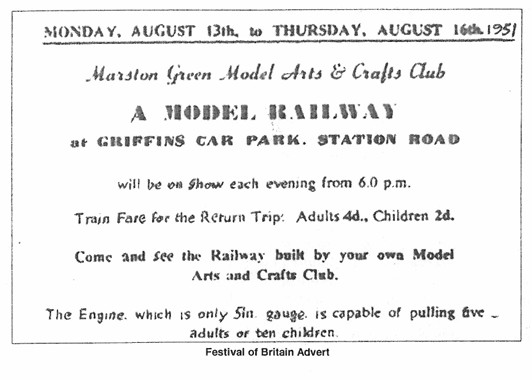
In April 1951 a meeting was held to discuss buying a 5″ gauge loco. This was agreed upon and an 0-4-0 tank engine, Nell, was purchased with donations from villagers, members and club funds. Materials were also purchased for making the track.
June 1951 – Frank Allcott made the bogeys for the passenger carrying trucks and at the same time the building of the track (160ft long) was making good progress, and in June 1952 all was completed. A 6ft passenger carrying truck was made a few years later. Vic King offered to lend the club his loco, Hielan Lassie for all club engagements. This was a big help and a backup loco for Nell. The favour was returned by a gift of cut glass to Vic. The club ran with Hielan Lassie and Nell until Frank’s Speedy was built and when that had worn out, after giving many years good service, some years later the club made Simplex in 1972 and 1973.
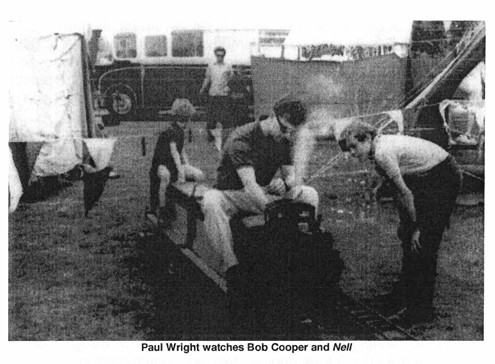
John Harbidge recalls around the early 1950’s that the bearings for the trucks were not standing up to the weight as they were home made bicycle type cup and cone bearings, these had to be replaced with ball races and involved him in doing the necessary machining and fitting, this had to be done overnight in readiness for another track run, and seemed like great fun for a young lad to stay up all night. He also remembers one incident at the Rover works in Clay Lane where the club ran inside the canteen, when Hielan Lassie broke away from the driving truck, the regulator was pulled wide open as it broke away and the loco careered to the end of the track, hit the buffer block at the end and broke two or three sections of track away! Luckily the only damage to the loco was that the boiler had moved forward 1/8 of an inch.
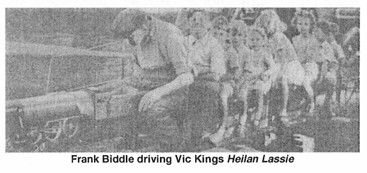
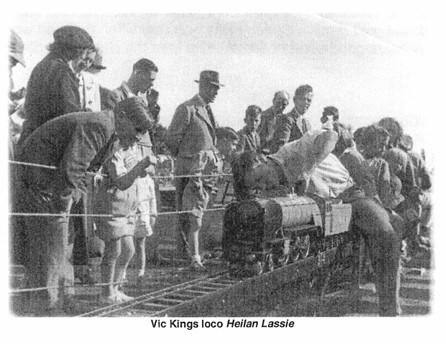
In early 1954 the club loco, Nell, was overhauled, re-bored, new pistons fitted, and boiler repaired. Also, the passenger carrying trucks had new brakes and axles made by Eric Withington.
In 1958 a 31/2″ gauge Juliette was given to the club by Mr Gerald Bank of Damson Lane together with a lot of old model engineering magazines. It wasn’t until 1964 that Ken Ross was able to start to re-build this model.
In 1964 a 5″ gauge Midland Compound loco was bought part finished with a view to the club completing it and using it for track events.
In 1968 the track was over hauled, Nel/ had new cylinders and drain cocks and a boiler certificate awarded. By June 1969 Nell was now complete and had been repainted. The club members were rightly proud of their achievements.
1970: Midland Compound, the question was put to the members “should we sell the Midland Compound or finish it?” The answer was “finish it”. At a later meeting, after realising both the skill and effort required most members said “sell it” as we did not have the expertise to finish it to the previous high standard of workmanship.
1971: Nell stripped down again: new springs, water pump, bypass fittings, oil pump and valves were fitted. As Nell was giving us so much trouble the suggestion was made that the club make a new loco, and research was done as to which loco would be most suitable. Bob Cooper headed this project and a 5″ gauge 0-6-0 Simplex model was decided upon, John Harbidge was to make the boiler and frames. Fittings and castings were purchased and all members made something for this club model, most parts should be ready for assembly by June 1972. This was the first loco built by the club and was built in less than 12 months, a quite remarkable achievement given members’ other commitments, and on the 30th May 1973, after Successful boiler testing and painting etc, she first ran on the track and in 1974 seven track events were successfully completed using Simplex. In 1976 we ran the engine and track at the annual Marston Green Flower Show to get us known again after being absent from local events for some time.
By October 1976 Simplex and Nell needed a pre-season overhaul to ensure both reliability and safety for the coming years’ public events.
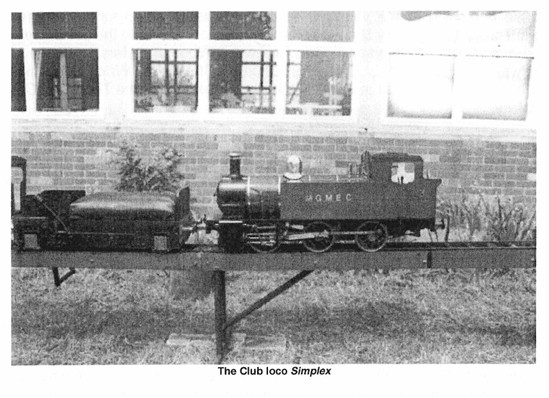
At the beginning of the year (1976) money was allocated for an “0-0” gauge layout project headed by Derek Watts. This was of interest to the junior members of the club. The layout was taken to Chelmsley Wood and Marston Green Model Railway Exhibition at St Andrews Church, Chelmsley Wood, and also to Stoneleigh, where it was in operation for the three days of the Town and Country Festival.
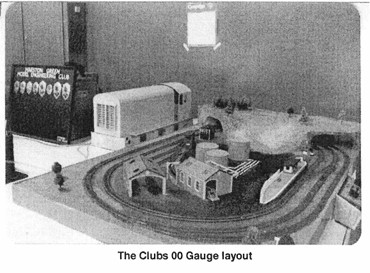
In October 1984 the layout was sold to Derek Watts as the number of junior members had decreased and regrettably the layout took up too much space in our small club room.
1980 Eric Withington made an excellent tender for the Midland Compound.
October 1981 an electric loco was started to be made as a backup for the steam loco’s.
In 1985 the Midland Compound engine was finally sold to our Secretary of that time, Harold Roe.
December 1987, during the Christmas period the club premises suffered a break in. As a result two loco’s were stolen from the club. Nell, our trusty 0-4-0 tank engine and an 0-6-0 British Rail Class 08 battery operated diesel shunter which was built by club members and started in 1981.
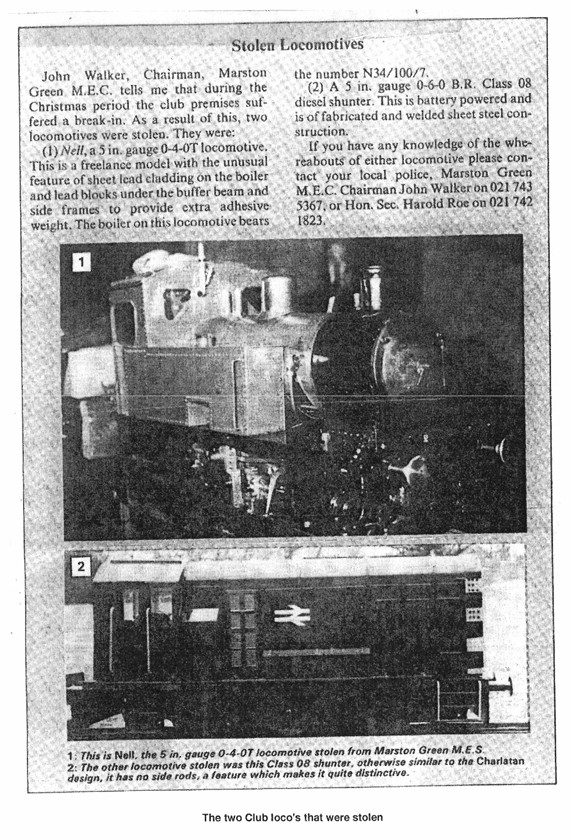
This was a big blow to the club as we did not have an engine for the forthcoming track events. Shortly afterwards an 0-4-0 Hunslett Sadle Tank loco was purchased from ever depleting funds so that we could still run a miniature railway and honour our commitments.
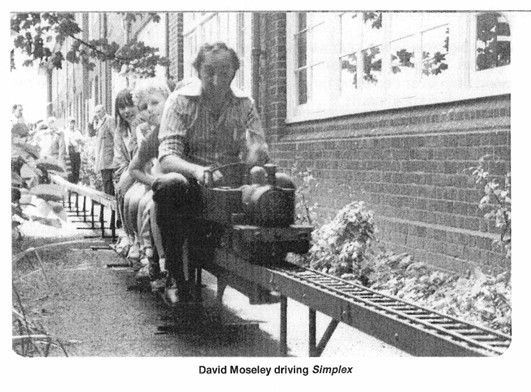
March 1991: A piece of land had become available at the back of the club for a village project. Various organisations were asked to attend a meeting and the club thought it may be possible to erect a permanent track there. At the meeting in the church hall it became apparent that a decision had already been made and that a bowling green would be laid on the land.
January 1996 – as some of our members were making “0” gauge and gauge “1” steam engines it was proposed to make an indoor track, straight up and down. This was subsequently made and bolted to the inside wall for the length of the club – 8 sections of 4ft could be removed and taken to exhibitions. This was built with kind donations from John Withington, Martin Sheridan and Graham Gavan, three members who had a keen interest in this project, along with club funds. This looked good at the annual Town & Country Festival at Stoneleigh with the small engines sitting on the track alongside the best of our colleague clubs in the region.
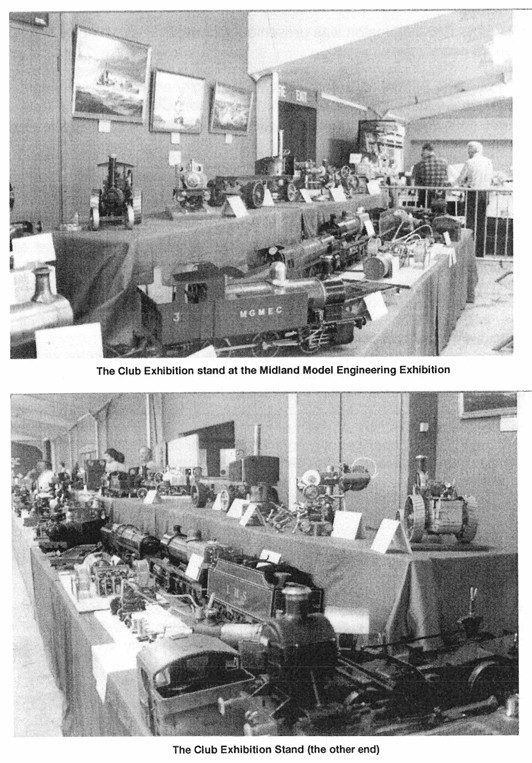
Between the years 1950 and 1990 the portable railway ran for nearly 90 organisations. During this period the club was very charitable in helping local organisations raise funds: Chelmsley Hospital, St Leondard’s Church, Marston Green Horticultural Society and many others.

Model Aircraft
In 1997 our Secretary at the time, Clive Longstaff who was very interested in model aircraft, got some members interested in this side of our hobby. He also introduced new people to the flying side who in turn brought along other potential members, therefore breathing new life into the club. The club rules were modified, this probably being the first time since their introduction in 1945, mainly to cover safety aspects of those wishing to fly model aircraft.
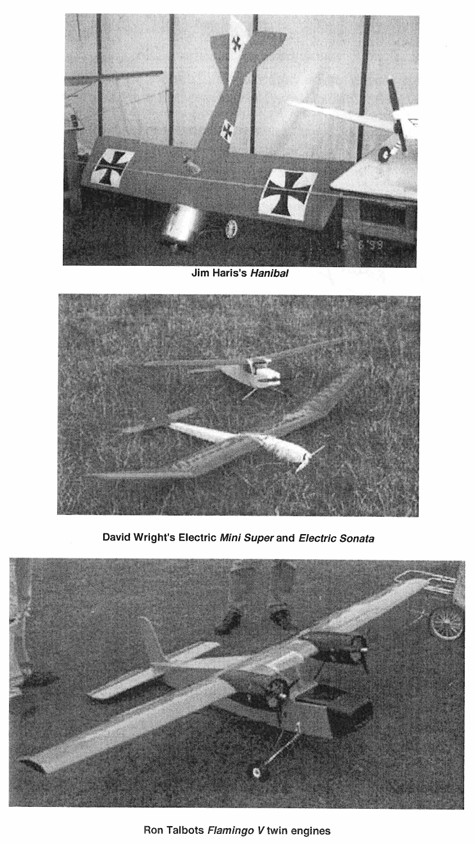
The model club continued to display at Stoneleigh Park (unit 2009) and the club house still proudly displays the crests from attendance.
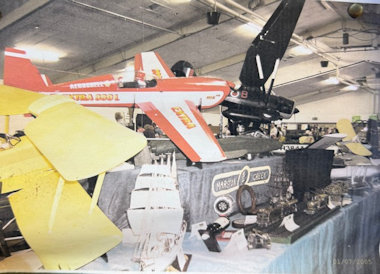
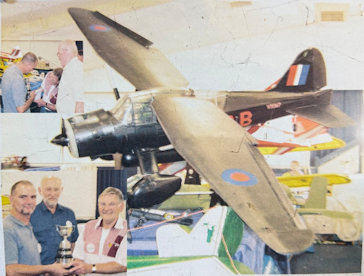
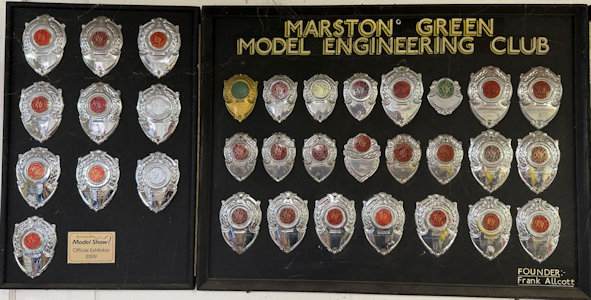
The number of members has increased dramatically, mainly due to the influx of model aircraft enthusiasts. We are affiliated to the British Model Flying Association (Club # 0737) and have been since 1997. From a group of flyers who were at a field off Gressel Lane unofficially, we moved to a flying field at Shustoke in August 1998. This was not a particularly good site and we moved to another field at Maxstoke in March 1999. We then went to a good site at Fillongly which most members were happy with but a complaint from a local resident meant that we had to move off.
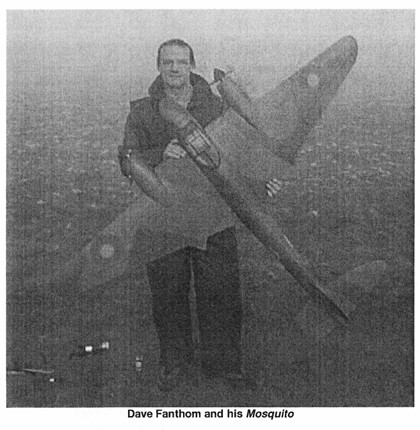
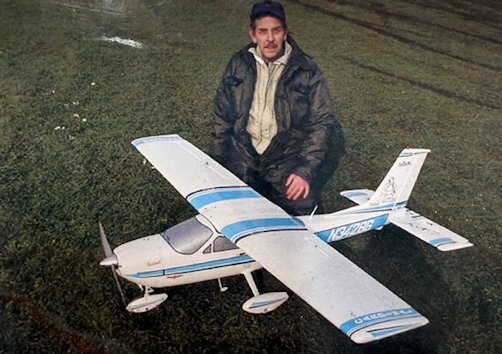
Since July 2001 we have a new site off Maxstoke Lane, Coleshill which is free from the previous Foot & Mouth problem, and are allowed on this land by John the farmer, who has been so very helpful and supportive in preparing an area of runway suitable for our needs.
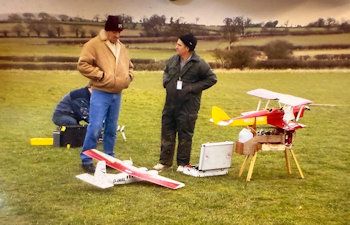

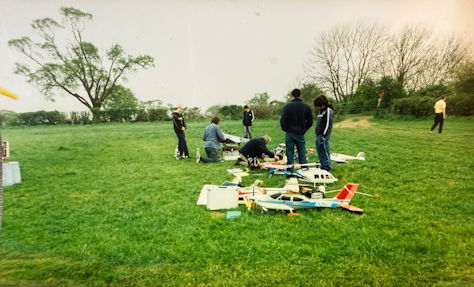
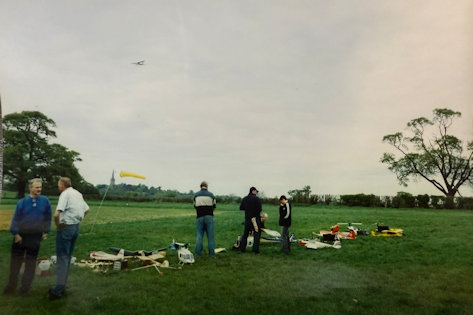
Many members including our current president (2025), Eric Hughes spent weeks hand seeding the grass that we now fly off. You can still find Eric tending to the grass and mower. The farmer loans out his vehicle to help with the grass cutting and the rolling of the strip, and keeps the hedges in order allowing safe approaches to the strip.
In 2004 planning permission and many adjustments were required for the land change of use, to model aircraft flying, and this continued right up until 2009 giving definitions to they types of model aircraft allowed to be flown from the site, and in responses to a noise complaint,
we now have a very robust set of rules. This could not have happened without the hard work and dedication of Jim Harris who diligently prepared all the required information and forms to present to the local council.
The club has had many instructors & BMFA examiners over the years that have given their free time to help others enjoy the hobby, and to all these people the club is eternally grateful.
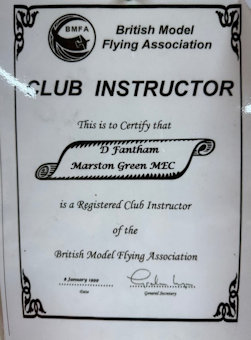
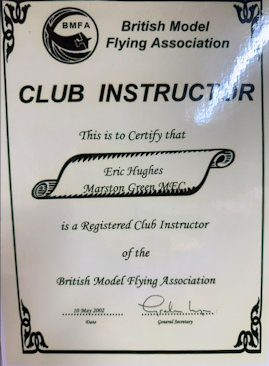
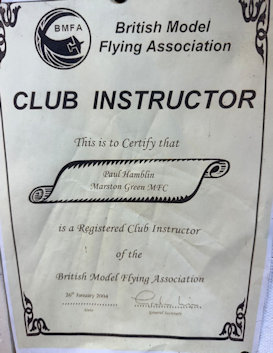
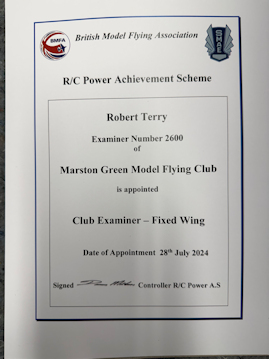
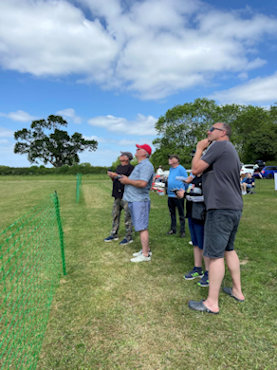
Club Instructor Dan Salter giving trial flights to visiting family day kids.
It is interesting to note that Frank Allocott, in his early days, made many model aircraft engines and in the early years of the club there was an interest in control line flying, that the club membership is now mainly aero modellers.
Technology & Social Media
2014 saw the launch of the club Facebook page – gratefully administrated by Gaz Bryant, and was an instant revelation for members to be able to share photos and videos from their flying experiences. Today the public page has more than 190 members.
2021 and the end of pandemic restrictions, saw the launch of the club’s own dedicated website with a clear goal to create a simple, user-friendly platform that highlighted the club’s location and welcome new members into the fold. The committee approached member Lionel Leek, having previously designed a website for a flying club in Devon, and was eager to take on the challenge, to inspire beginners to take flight with model planes. The Club extends its appreciation for the foundation that Lionel laid for the website. In 2024 the website expanded its reach and ranking, with incorporation of BMFA achievement scheme information, training packs and details of members models for mass builds, and continues to evolve monthly, maintained and developed by Rob Terry.
2025 was the year that MGMFC went into social media with a TikTok page, Instagram account and a new Members Only Facebook page – many thanks to Carl Brisco and Sarah Salter for the upkeep and generation of content.